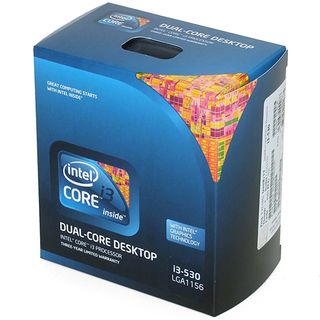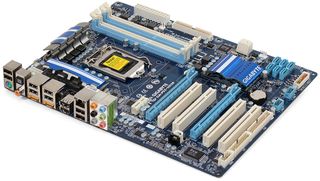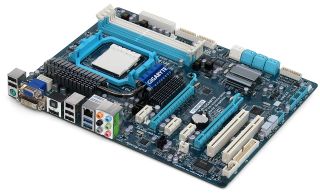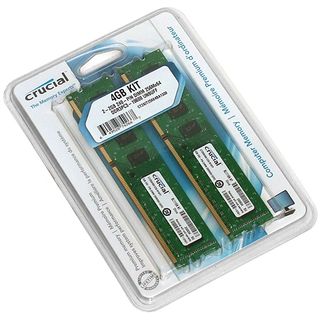Is Intel's Core i3-530 Fast Enough For Performance Gaming?
Two $350 Platforms
LGA 1156, Intel’s most recent mainstream CPU interface, supports Intel's Core i3, i5, and certain i7 models, in addition to a single Pentium processor designated for OEM customers. Sticking to the mainstream theme, we chose to test the company's least-expensive Core i3 model, the 2.93 GHz Core i3-530.

In his previous article, How Many Cores Do You Need, colleague Don Woligroksi found that while three cores significantly outpaced two, four cores provided little additional gaming benefit. But his observation was published before the return of Intel Hyper-Threading, which adds a logical core for each physical core on the i3 and i7 CPUs.
With the same limit of four threads running on half as many physical cores, the Core i3-530 of today’s system will help us determine whether this technology could run counter to our earlier findings.

Since overclocking is part of today’s test, we're using Gigabyte’s P55-UD3R for its excellent stability and moderate price. This recently-discontinued part is still available from some vendors, is still supported by Gigabyte, and doesn’t sacrifice graphics card bus width in exchange for full-speed USB 3.0 connectivity.
With a mind towards Don’s earlier triple- versus dual-core findings, we sought an AMD triple-core processor with the same $120 price as Intel’s Core i3-530. The only model that matched was its 2.8 GHz Phenom II X3 720.

We would have hoped that AMD would be selling a 2.9 GHz Phenom II X3 735 to replace this older part. However, we know that the triple-core Phenom IIs are expensive, which is why the company is instead focusing on dividing its products among lower-cost Athlon II and higher-cost Phenom II X4 lines.
We don't see that situation changing anytime soon, as long as AMD isn't getting back volume of quad-core chips with a defective core that would otherwise make Phenom II X3 production economical.
Stay on the Cutting Edge
Join the experts who read Tom's Hardware for the inside track on enthusiast PC tech news — and have for over 25 years. We'll send breaking news and in-depth reviews of CPUs, GPUs, AI, maker hardware and more straight to your inbox.

Unlike Intel, AMD provides enough PCI Express (PCIe) 2.0 lanes for its mainstream chipsets to support USB 3.0 controllers at full bandwidth without stealing lanes from the graphics card. The AMD Socket AM3-compatible 890GPA-UD3H provides most of the same features as our chosen Intel-compatible model, plus USB 3.0, SATA 6Gb/s via AMD’s new SB850 southbridge, and an onboard graphics engine that we fortunately won’t need to use.

Rated at DDR3-1333 CAS 9, but capable of reaching CAS 6 at its rated speed and DDR3-1980 at its rated timings, Crucial’s CT25664BA1339 continues to impress us by providing aggressive scalability at a low price. These modules use the same highly-rated D9KPT chips found on many competing DDR3-1600 products, are priced lower, and appear to benefit from a lack of heat spreaders.
Current page: Two $350 Platforms
Prev Page Opening The CPU Bottleneck Next Page Is Overclocking Needed?-
andy5174 It should also take GTA IV (which is CPU intensive game and can utilize four cores) into consideration, although most games don't behave similar today. In addition, I would expect more and more to-be-released games to be able to utilize the full potential of quads.Reply -
shin0bi272 all similar fps results usually means one of two things... either youre gpu limited or those results are accurate (meaning you didnt ever become cpu limited ... which I thought was the point of this review). Please redo the test with a 5970 to see if the rankings change. Plus if youre saving money on your cpu you can spend it on the gpu ;)Reply -
dapneym On the "Is Overclocking Needed" I think you forgot a few fours. A voltage of 1.72 would probably fry the processor quite quickly. You had it right later one with 1.472, but it shocked a me a bit at first to see such a high number, haha.Reply -
tortnotes shin0bi272, correct me if I'm wrong, but the point of this article was to see how much the CPU really matters when paired with a reasonable single GPU. I think the result--that it doesn't much matter--is pretty good to know.Reply
If a super high end GPU was used, it wouldn't be relevant to gamers looking at CPU performance.
For me personally though.... I'll stick with my i7. Beats any i3 at mental ray rendering any day. -
shubham1401 ^Yeah!!Reply
If the user has money for Super high end GPU why would he look at an i3 processor? -
I wonder who will buy such an exclusive separated Graphics card with the core-i3 processor. cause most of the core-i3 buyers don't want to waste money on a separated GPU.others will just keep their core-2(specially quad series) processor because they're better than core-i3 processors(According to 3D-Mark Result).Reply
-
amdfangirl Great article.Reply
We need more articles like this! A million better than a standard review.
Most Popular


